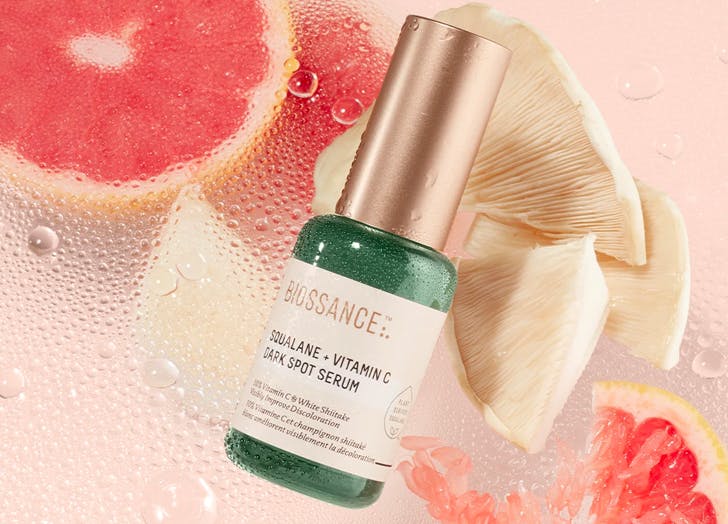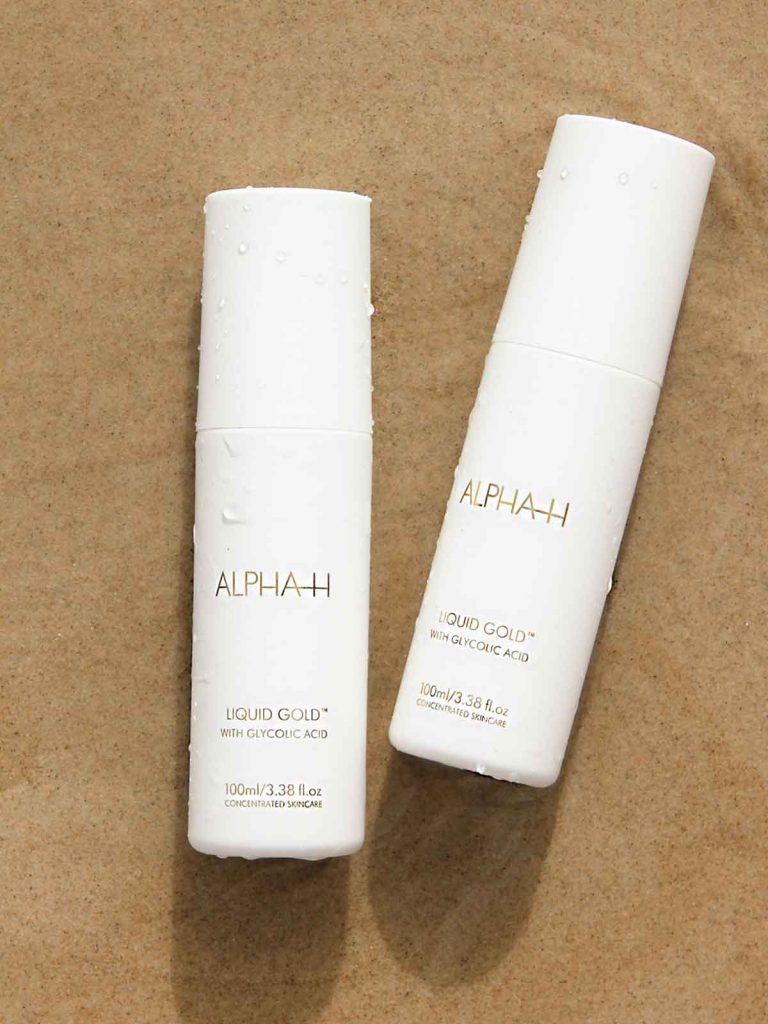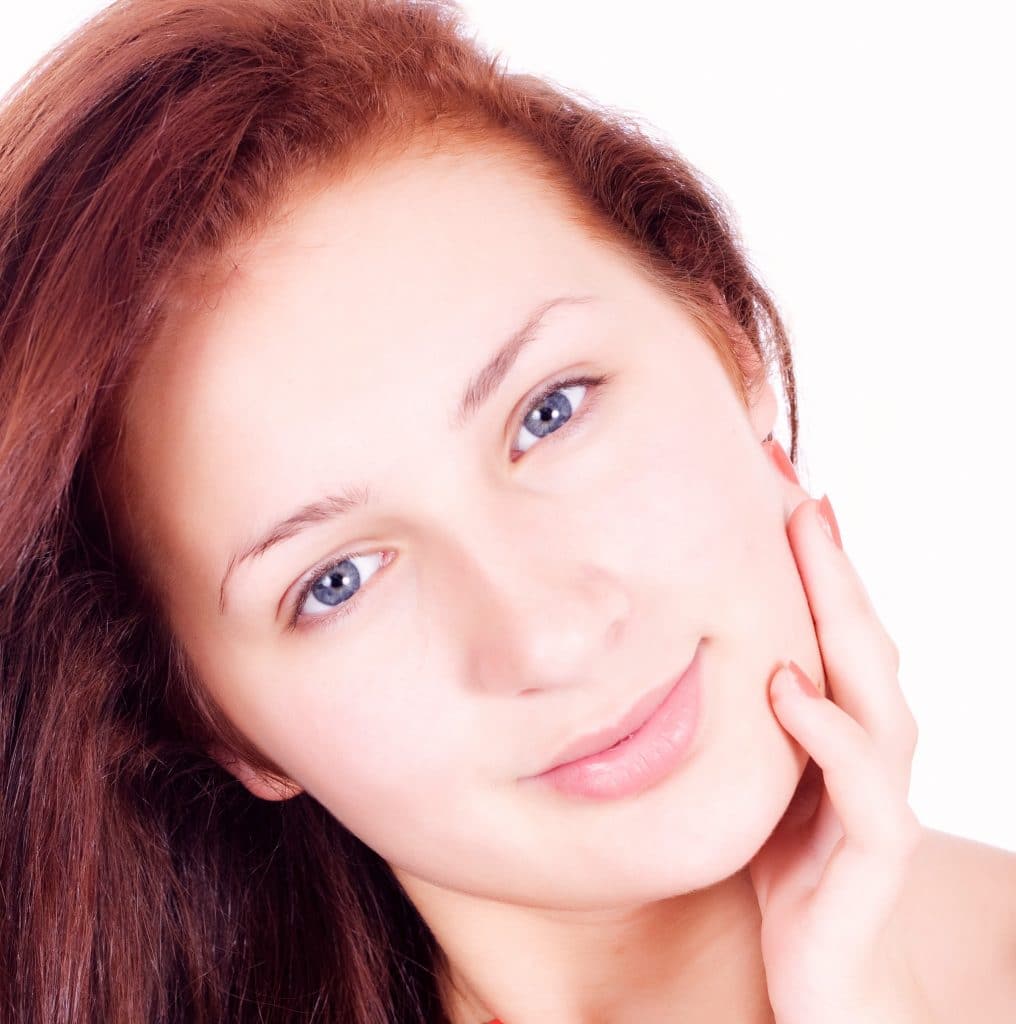One of the most common things I get asked (apart from how do I get rid of wrinkles) is how can I get rid of dark spots and pigmentation. So here are my best tips on the ingredients you should be looking for to lighten all kinds of dark spots, from acne scaring, to sun damage, to melasma.
Vitamin C
Vitamin C is one of the very best ingredients to use regularly in your skincare routine to deal with dark spots. It not only stops existing pigment from getting any darker, but blocks new pigment production from occurring. Couple that with the fact that it’s an antioxidant that helps protect against damage from UV radiation and air pollution. AND it also stimulates collagen production. I love Biossance Squalane and Vitamin C Dark Spot Serum because it sinks into my skin so beautifully and starts fading existing dark spots from the get go.

Retinol
Vitamin A or retinol is one of your best weapons in the battle against fine lines but it also helps fade dark spots. It does this by speeding up cell turnover and kicking your collagen production up a notch. All that action for one active ingredient means brighter newer skin. Be careful with this one though, too much too soon and your skin will throw a hissy fit and go super sensitive. Start with a small amount and work your way up with this one; using too much too fast can actually make dark spots worse.
My recommendation here (if you’re in your 30s and up) would be to go to your GP or dermatologist for a prescription-only retinol known as tretinoin. It might not be as fancy and pretty as cosmetic company retinol but it’s much more effective. Start only applying one night per week, then two night a week. If your skin seems fine and isn’t flaky or irritated then look at going three nights a week, eventually building up to every second night. Trust me, it’s worth it.
Tranexamic Acid
Tranexamic acid isn’t known on its own for being a heavy lifter when it comes to knocking out dark spots, but think of it as the “two” in a “one-two punch combo”. It’s an anti-inflammatory ingredient which inhibits the transfer of pigment to the surface of the skin. It was traditionally used in surgery to stem bleeding, and prescribed to regulate heavy periods but patients also noticed an improvement in their pigmentation. It’s not as strong as some of the other ingredients on the list but is commonly paired with the others to supercharge the brightening response to melasma and other dark spots. My pick for this would be Murad’s Replenishing Multi-Acid Peel. This also has a bunch of other ingredients such as AHA/BHA acids so make sure you’re not doubling up in your routine.
Glycolic Acid
Are you still using a face scrub? Get ready to ditch it in favor of glycolic acid. Physical scrubs (as in with gritty bits in them) are too harsh for people prone to dark spots and pigmentation, and can actually be contributing to the problem. Enter glycolic acid. Its an alpha-hydroxy acid (AHA) that helps dissolve the bond between the skin and dead skin cells. All your other products will sink in better with no old skin blocking their way, plus dead skin is often discoloured so glycolic is a hero when it comes to healthier brighter skin. I’ve always been a fan of Alpha-H Liquid Gold when it comes to glycolic. This Aussie product is a toner-style treatment that combines glycolic acid with liquorice to strengthen brightening effects.

Salicylic Acid
Another power chemical exfoliant, salicylic acid is a beta hydroxy acid or BHA. This type of acid helps with redness and irritation and also helps get rid of excess oil lingering about your pores. It gently exfoliates and encourages cell turnover and production, which, you guessed it, helps with dark spots. Be careful though, many people think if they have oily skin that they need lots of salicylic acid, but using it in more than one step of your routine could cause your skin to start over producing oil to compensate. For my money, I am all about Paula’s Choice Skin Perfecting 2% BHA Liquid Exfoliant. It’s specifically designed to give the pores a deep cleanse, and dissolve clogging agents to improve skin texture and radiance. There’s a reason this is a cult hit product.
Hydroquinone
This is an extremely powerful bleaching agent and queen of the castle when it comes to lightening hyperpigmentation and helping with melasma. BUT it’s also got the potential to be super strong and irritating to skin if not used properly. It’s becoming harder and harder to find in over the counter products, but I think this is a good thing. It’s one ingredient I recommend only using in consultation with a dermatologist to maximise your results, ensure you’re using it in conjunction with the right other products, and minimise your potential reactions.
See a professional
Of course, brightening skin spots can be a heavy-duty activity, so before combining these ingredients, I would recommend a visit to your friendly dermatologist to get an idea of what your skin needs, and how best to get it into your routine.



